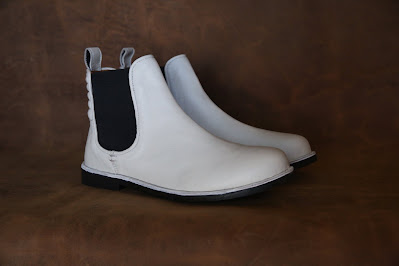
Work Boots for Men Work boots play a crucial role in ensuring the safety and comfort of individuals engaged in various professions that demand heavy-duty foot protection. Whether you're a construction worker, mechanic, or any professional working in challenging environments, finding the right pair of work boots is essential. In this comprehensive guide, we will explore the key factors to consider when selecting work boots for men, highlighting the importance of safety, durability, and comfort.1: The Importance of Quality Work Boots
Work boots are not just a mandatory piece of safety equipment; they are a vital investment in your well-being and job performance. High-quality work boots protect against various workplace hazards, including sharp objects, heavy machinery, and electrical currents. Additionally, they offer support to prevent fatigue during long hours of work, ensuring that your feet remain comfortable and free from injuries.
2: Understanding Workplace Hazards
Before delving into the features of work boots, it's crucial to assess the specific hazards present in your workplace. Different professions come with distinct risks, and your choice of work boots should align with the potential dangers you may encounter. For example, construction workers may require boots with reinforced toes, while electricians need footwear that provides insulation against electrical currents.
3: Safety Standards and Certifications
When shopping for work boots, it's essential to look for those that meet industry safety standards and certifications. The Occupational Safety and Health Administration (OSHA) sets specific guidelines for protective footwear. Ensure that the boots you choose comply with these standards, providing you with confidence in their ability to safeguard your feet in the workplace.
4: Materials Matter
The materials used in the construction of work boots significantly impact their durability and performance. Leather remains a popular choice due to its durability, water resistance, and breathability. However, advancements in technology have introduced synthetic materials that offer similar benefits with additional features such as lightweight construction and enhanced flexibility.
5: Comfort is Key
Long hours on your feet demand work boots that prioritize comfort. Look for boots with adequate arch support, cushioning, and a comfortable insole. Remember that discomfort can lead to fatigue, affecting your productivity and potentially causing long-term foot issues. Prioritize brands that integrate ergonomic designs to ensure your feet stay comfortable throughout the workday.
6: Insulation for Specific Environments
If you work in extreme temperatures or wet conditions, insulation becomes a crucial factor. Insulated work boots help regulate temperature, keeping your feet warm in cold environments and preventing overheating in warmer conditions. Thinsulate and Gore-Tex are popular insulation materials that offer a balance between warmth and breathability.
7: Slip Resistance and Traction
Slips and falls are common workplace accidents, emphasizing the importance of slip-resistant work boots. Look for boots with outsoles designed to provide excellent traction on various surfaces, reducing the risk of accidents. Whether you work in a construction site, warehouse, or restaurant kitchen, slip-resistant boots are a valuable investment in your safety.
8: Toe Protection Options
Different professions may require varying levels of toe protection. Steel-toed boots offer maximum protection against heavy objects and compression, making them ideal for construction and industrial settings. Composite toe caps, made from non-metal materials, provide a lighter alternative while still meeting safety standards. Evaluate the nature of your work to determine the most suitable toe protection for your needs.
9: Waterproofing Features
For those working in wet or muddy conditions, waterproof work boots are essential. GORE-TEX and other waterproofing technologies create a barrier that prevents water from entering the boots while allowing moisture to escape. This feature is particularly important for individuals working in agriculture, landscaping, or any environment where exposure to water is a constant challenge.
10: Proper Sizing and Fit
Even the best work boots won't provide adequate protection if they don't fit correctly. Always measure your feet and refer to the sizing charts provided by the manufacturer. Pay attention to the width as well, ensuring a snug fit without sacrificing comfort. Properly fitting boots contribute to overall foot health and prevent issues like blisters and calluses.
Conclusion:
Choosing the right work boots is a critical decision that directly impacts your safety and well-being on the job. By considering factors such as safety standards, materials, comfort, and specific workplace hazards, you can make an informed choice that aligns with your profession's demands. Prioritize quality, durability, and functionality, and invest in a pair of work boots that will support you throughout your workday, keeping you safe and comfortable in any environment.
Read more: Unveiling Elegance: The Timeless Appeal of Paul Parkman Derby Shoes
Read more: Stepping into Style: A Guide to Paul Parkman's Premium Men's Loafers





